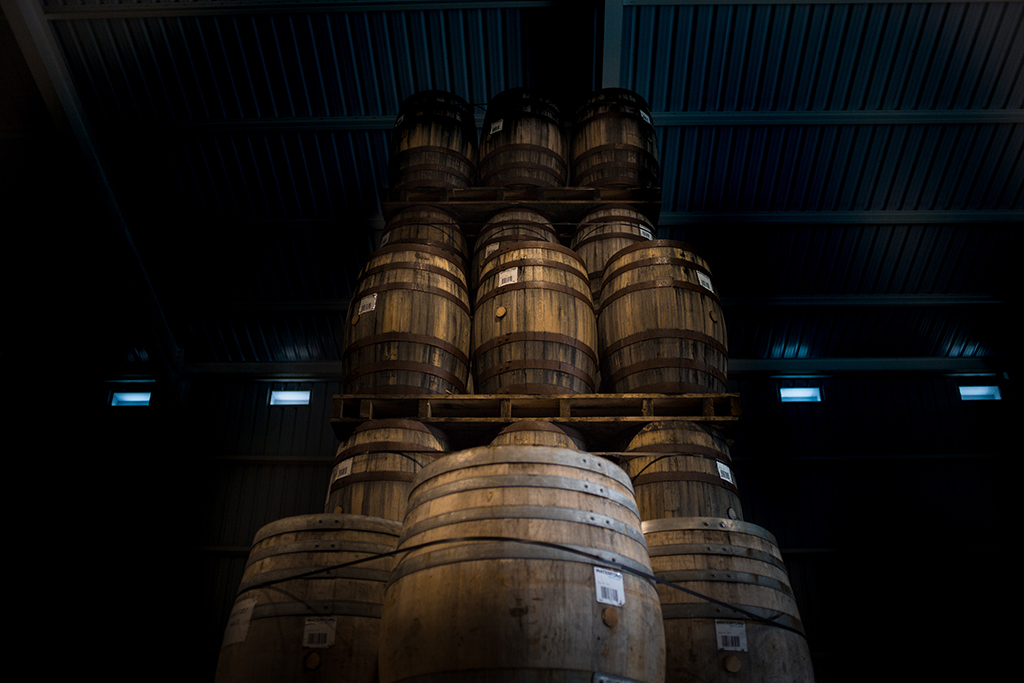We all have a friend who knows just that little bit more about whisky than we do.
Thankfully, our whisky expert Blair Bowman is on hand to help you out.
It is often said that it is the ‘wood that makes the whisky’ but there is so much more to it than that. In certain quarters it is said that around 70 per cent of the final flavour of the whisky comes from the cask.
There are strict rules governing the way whisky casks are used to mature whisky.
There are lots of different types of casks that whisky can be matured in, and these are often described on the label of the whisky. For example, you may have heard of hogsheads, sherry butts or quarter casks.
In the relevant legislation (Scotch Whisky Regulations 2009), it is specified that Scotch whisky must be matured in oak casks that are no larger than 700 litres in size and that the spirit must be matured for three years before it can legally be called whisky. So that’s not too complicated – let’s move on to where it starts to get a bit more interesting.
There are two main species of oak used to mature whisky, although some distilleries are experimenting with other oak species. The most common are quercus robur and quercus alba. These are often referred to as European oak (q. robur) and American oak (q. alba). European oak has traditionally been used to make sherry casks, while by law American oak must be used to mature bourbon and can only be used once.
For us canny Scots, this means that there is a good steady supply of ex-bourbon casks to mature Scotch whisky in.
It is said that over 90 per cent of all the casks maturing in Scotland are ex-bourbon casks.
Confusingly, most sherry casks used in Scotland to mature whisky are made from European oak and have been ‘seasoned’ with sherry for a short period before being sent to Scotland. Today, the sherry industry prefers to use American oak in the production of sherry and it is very hard to extract these American oak sherry butts from bodegas.
You may wonder why it is that oak is the chosen wood? Well, if we go back a couple of hundred years barrels were the cardboard boxes of their day. These wooden receptacles were usually made of oak because it produces durable and watertight casks.
In Scotland, oak trees are not particularly common, although there was an abundance of casks that formerly held a variety of different things. For whisky drinkers, oak casks represent the ideal recepticle in which to mature whisky.

Going back even further, crofters would turn their surplus barley crop into spirit. They would use it to trade with, drink themselves or they would store any surplus in whatever barrels they had available. These barrels would have previously contained anything from herring to butter or nails.
No one knows exactly when it happened but at some point someone probably discovered an old cask at the back of a shed that had been left to sit longer than usual, and realised that the once fiery, rough tasting spirit now tasted much more mellow and flavourful, and thus whisky maturation was discovered.
When it comes to whisky maturation, cask size really matters.
GORDA (700 LITRES) – A huge cask, typically used for marrying different whiskies but occasionally used to mature whisky.
MADEIRA DRUM (650 LITRES) – Short, fat and wide barrel used in the Madeira wine industry. Occasionally used to ‘finish’ whisky.
PORT PIPE (650 LITRES) – Tall and thin. Used to mature Port wine but also used for ‘finishing’ in the whisky industry.
BUTT (500 LITRES) – Tall and narrow, with a tapered shape. Butts are used in the sherry industry in Spain. Butts are the common type of sherry cask used in the whisky industry.
PUNCHEON (500 LITRES) – Either short and fat or narrow and tapered, like the sherry butt, puncheons are typically used by the rum and sherry industries but are also used to ‘finish’ whiskies.
BARRIQUE (300 LITRES) – Very common in the wine industry. They are held together with wooden strips, rather than the metal hoops you usually see. Used for ‘wine finish’ whiskies.
HOGSHEAD (225 LITRES) – Typically a hogshead is ‘re-made’ in Scotland by coopers who are effectively enlarging a standard barrel. They are by far and away the most widely used cask for maturing whisky.
BARREL (200 LITRES) – Barrels are made in the USA from American oak (q. alba). US laws dictate that they can not be reused once the bourbon has been bottled.
QUARTER CASK (50 LITRES) – As it sounds, a quarter of the size of a standard barrel. The small size increases the contact between the spirit and the wood, thus encouraging a more rapid maturation.
BLOOD TUB (40 LITRES) – Originally designed to be carried on horseback. They are most commonly used in the brewing industry but occasionally used to mature special editions of whisky.
TAGS

